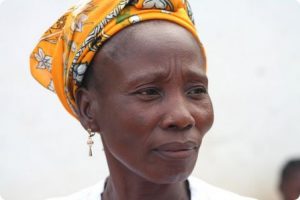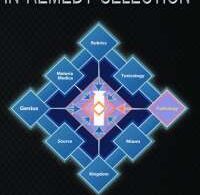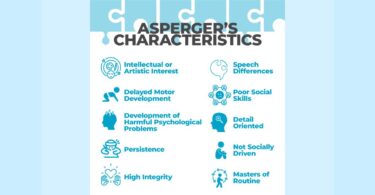This is the story of a young South African woman. Her heart is heavy like the heart of many South African women over the last generations. South African women are strong and courageous. They have carried the burden of Apartheid. They are survivalists. I have to protect her identity, so I have given her another name, a Setswana name as her name originates from Setswana: Botshelo (which means “life”).
Here are the words of Botshelo:
“I see a lot of me within my mother. While driving yesterday I could feel so much of my mother within me. Her strength, her courage, love and commitment. All these traits she continues to uphold, regardless of the disappointment, the anger and pain she’s been through and continues to walk through. …” (June 2013, after one month of homeopathic treatment).
She came to my practice for the first time in May 2013. She was born in 1984 when there was still Apartheid in South Africa. When her mother was pregnant with her, her father, a teacher and freedom fighter, was taken to prison. During the first five years of her life she was in confusion about who her father was; her maternal grandfather cared for her like a father. He also was imprisoned before by the Apartheid regime because he was also an activist.
When her father was released from prison in 1990, she struggled to connect to him. She experienced him as “very hard, angry, harsh”. Anger is a strong emotion and carries within the human struggle of survival, however, chronic and uncontrolled anger is usually rooted in frozen emotions, especially fear – emotions which cannot be expressed in any other way than violence (1). Another aspect of anger is the following: “In humans the experience of anger often stems from dashed hopes” (2). Then there was the trauma of being persecuted, of husband and wife and their children being separated and the trauma of imprisonment. Trauma energy can get transferred into irritability, anger and resentment and leaves the sufferer with a feeling of being out of control (1). Her mother had her own suffering and trauma, she tried her very best to care for her family but at times, especially when Botshelo started menstruating, when her body started to express womanhood, she felt neglected. Her mother’s responses to her father were submission and persistent, sometimes desperate attempts to reconcile. Botshelo responded to her mother’s moments of helplessness and emotional distance with symptoms of bulimia and dating abusive men.
Persecution leaves its mark not only directly on those who were persecuted but also on the next generation, sometimes even further – nowadays defined as “Second Generation Syndrome”. Here lies Botshelo’s subconcious connection to her father and also this way they are bonded, a bond which is beyond being a father and a daughter. It is possibly more than cellular memory, a kind of emotional and spiritual memory. This memory keeps aching and its consequences are very complex. The psychiatrist Dr Natan Kellermann for example has studied in depth the behaviour of holocaust survivors and in his essay he quotes Viktor Frankl, a psychologist and famous holocaust survivor himself as he defined the responses of prisoners of the concentration camp: “an abnormal reaction to an abnormal situation is normal behaviour” (3). Everything seems to be turned upside down. According to Kellermann, the psychopathology of the survivors and of their children “should rather be viewed as normal behaviour in abnormal circumstances (4). It is still psychopathology but defined this way it can help the therapist to come to a deeper understanding of the many painful struggles these patients have. The wounds are deep and beyond human comprehension.
Botshelo’s father wanted her to grow up to be a traditional African woman, maybe his own desperate attempt to secure the identity of his family and ancestors. When she spoke up at the age of ten against her father during a visit of friends, he beat her after they left. Later in puberty she started her own path of rebellion. She fell pregnant at the age of 17 and had an abortion. In her twenties she stayed very frightened of the possibility of becoming pregnant. Despite all her emotional pain she had managed to keep strong in herself and she did social work for vulnerable women, certainly also an expression for being second generation – one of the symptoms according to Dr Natan Kellerman: “a need to be super-achievers to compensate for parents’ loss” (4).
Her father meant well but was very scarred. Due to abrupt and sudden changes in personality she was scared of him as a child. As a young woman she was suspicious and shy of men, nevertheless had a strong desire to fight those who appeared to believe African women should be submissive to men and have many children. Later her father worked for the Human Rights Commission and may have done some inner work of healing and reconciliation for himself but he nevertheless stayed mainly inaccessible to her. South Africa was at that time – and still is – in the process of reconciliation and is still fighting racism.
I want to quote the words of Thabo Mbeki, former president of South Africa. He spoke at a memorial Service I attended in December 2014 in honour for former president Nelson Mandela in December 2013 in Johannesburg:
“We should never stop to fight racism and with racism I mean not only white people against black people or black people against white people but all forms and manifestations of racism until we are all able to walk together in peace in South Africa.”
The Apartheid regime used calculated methods to weaken the strength and dignity of traditional African families. They separated men from their wives and their children, they brought them as workers into the cities and minimised contact to their homes. The traditional role of the patriarch got infiltrated, women felt more and more obliged to fill this role. The original structures were hollowed out and did not seem to make sense anymore. (5,6).
During the course of homoeopathic treatment I let her stay mainly on low potencies of 6 C and 12 C, sometimes 30 C, mainly NATRUM MURIATICUM. Her emotional pain had been strong and her emotional wounds had had no chance to heal, so my regime of treatment was gentle and deep at the same time. Most of the time I let her take the remedy in water. Her panic attacks started to become less often after seven months of homeopathic treatment and she was now feeling that she was “birthing her emotions”.
At that time she had an “unsettling” dream: “In the dream the brother of my partner passed away. My mother came into the building to give condolences. My partner asked me: “Are you selling the building?” The building is out of concrete and has the form of a cylinder. There is a pink curtain. And there is a sea, thick with salt. A wave hit me, I could not breathe. Then a tidal wave was coming and I ran …”
The symbolism of the dream refers to the treatment with Natrum muriaticum. In the centre of the building is somebody who just lost a loved one and there is grief. The grief is surrounded by a wall of concrete which turns into a curtain, then into a sea with thick water and then into a lot of moving and flowing water – a tidal wave. The emotions have become more and more flowing which means that they have become more accessible to her but they are (still) overwhelming.
At around that time she started to become closer to her mother. Over the last years she also has been a provider for her family and her extended family. This is the way most South African traditional communities have been able to carry themselves. Those who earn money provide for the members of the family who are not able to earn a living. In most traditional communities nobody is alone or uncared for.
In between she received IGNATIA, the acute remedy of Natrum muriaticum and one of the main remedies of grief. Ignatia expresses grief in a direct way, Natrum muriaticum expresses grief in the form of stasis, a manifestation of longlasting grief.
In the dream appears a brother who passed on, in her own life she has suffered grief in the relationships with her two brothers and the family situation has been very complex and difficult. She suffered from two addictions – to marijuana (she called it “Ganja”) and to cigarettes. Eight months after the onset of treatment she shared with me that in 2013 she had smoked Ganja about 40 times, often in connection with alcohol (a very dangerous combination which can cause psychosis long term) and that she wanted to stop smoking Ganja now, especially as its effects on her body and on her brain activities had became stronger and stronger. Fortunately there were no panic attacks then but she was suddenly disturbed by sleeplessness and intermittent persistent thoughts which felt to be there “all the time” and “like a conversation”. She even asked me: “Am I mad?” I was very moved by her confidence to tell me about it. To share with a therapist that there is a marijuana or another kind of addiction is not easy for a patient. But it is an essential step towards healing. Taking drugs additionally to taking a homoeopathic remedy can potentially obstruct and disturb the process. She agreed to stop smoking Ganja immediately and she was very determined. At that time her partner (now ex-partner) was still smoking Ganja but she was nevertheless able to stop completely.
My next prescription was CANNABIS 1 M, two doses to be taken in water, on the next days, further diluted and potentized according to Dr. Subrata Banerjea’s essay (7). She reacted very strongly to the remedy and therefore 1.5 days were enough.
In June 2014, after being sober for 7 months, she decided on her own to quit smoking cigarettes. I let her take Tabacum 12x twice daily for about 3 weeks. She was very eager to stop smoking but had to go through of phase of really struggling with it. However, she did manage fine after some months.
2014 in general brought many positive changes for her. She started a new relationship, in the beginning very rocky. They did struggle but they have been able to communicate very well, also been able to talk about difficult things, to be able to understand each other and care for each other.
There were some dark moments, too. She visited a male friend at his home and became incredibly scared and her body went into panic mode. I suggested psychological therapy additionally and she started seeing a psychoanalytical therapist, and the combination of homoeopathic and psychological therapy has been empowering for her. According to Dr Brian Kaplan, homoeopathy and psychotherapy complement each other well (8).
At the end of the year she changed jobs. She found a new work place where she is very appreciated and where her skills are very much needed to improve social and medical conditions in South Africa. And she started to make peace within herself.
Not by might, and not by power, but by spirit alone shall we all live in peace. (based on Zechariah 4:6)
1 Emotional and Psychological Trauma: Causes and Effects, Symptoms and Treatment
2 Theories of Aggression and Violence. Anger and Attack. A cybernetic of Violence by Frederick T Melges, M.D., and Robert F. Harris, B.S., P 109 of the book “Violence and the Struggle for Existence” by 23 authors, edited by David N. Daniels, M.D., Marshall F. Gilula, M.D., and Frank M. Ochberg, M.D.
3 Man’s Search for Meaning by Victor Frankl, Boston: Beacon, 1959.
4 Diagnosis of Holocaust Survivors and their Children by Dr Natan P.F. Kellermann, first published in the Israel Journal of Psychiatry & Related Sciences, Vol. 36 No. 1, (1999) 56-65
5 http://overcomingapartheid.msu.edu/multimedia.php?id=65-259-5
6 Social Disorganisation, Social Capital and Violence Prevention in South Africa by T. Emmett; Child, Youth and Family Development Research Programme, Human Sciences Research Council
7 Collection of Gems and Hidden Treasures from Hahnemann’s Organon by Dr. Subrata K. Banerjea – with friendly permission by Dr Banerjea himself, he is the principal of Allen College of Homoeopathy in Essex, UK.
8 The homeopathic conversation by Dr Brian Kaplan (Publisher: Natural Medicine Press)







